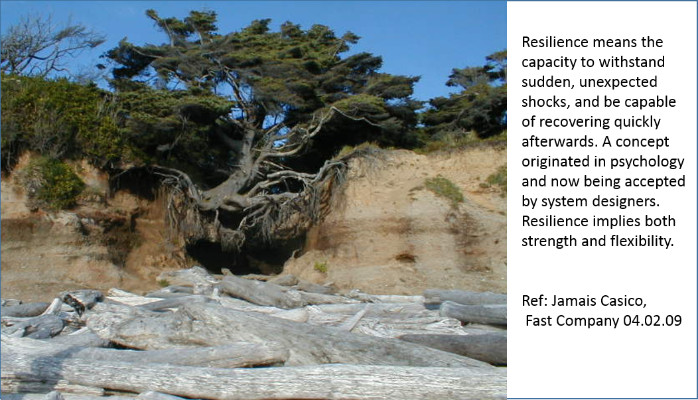Design for Resiliency – How soon would this become a system level criterion?
Richard Feynman’s demonstration of the intrinsic cause of the Challenger disaster can be viewed as making a strongest possible case for the design for resiliency. (https://www.washingtonpost.com/news/speaking-of-science/wp/2016/01/27/a-famous-physicists-simple-experiment-showed-the-inevitability-of-the-challenger-disaster/)
The inadequate capability of the O-ring to quickly return back to its function after the significant external factor (Cold Temperature) proved crucial in the catastrophe. If only one component’s resiliency becomes so significant, in case of the system design this issue obviously deserves much greater attention.
Resiliency or resilience is defined as 1/(time necessary for the system to fully recover after an impact). Obviously, if the system does not recover, that means the system was not resilient, and no matter how reliably it could behave under the regular environmental and operating conditions under warranty. Such system can be considered ‘fragile’ under the comprehensive design-risk approach developed by Nicholas Taleb. In fact he goes on to define antifragility as the ability of the system to ‘regenerate’ and even ‘become stronger’ as a modern engineering approach.
It becomes especially important in light of trends in energy decentralization, acceptance of renewables in the existing grid, energy storage systems, and adaptation of micro-grids. The purpose of the micro-grid is to sort of circumvent several different energy sources in the supply to a certain small user community area independently. Thus to prepare for a black swan event (the calculated unexpected), A parameter such as resiliency must become a driving one in the design of the system architecture.
Design for Resiliency puts the system engineers on the spot. It demands that we develop new tools and methods, refresh our approach, and rewrite the standard works. LinkedIn can be a powerful and convenient platform for continued discussions of this aspect. It opens a wide communication channel for all sides: engineers and customers alike. I have been excited to follow research from a friend Dr Mark Labinov and I wish he would become a conduit for such discussions and broader cooperation, establish advantages and limitations and devise the potential usage frameworks. If you are interested, feel free to contact him directly, through LinkedIn (http://www.linkedin.com/in/marklabinov).
In the meantime, I have a question:
Is it time for Resiliency to become an independent discipline ?
Or should we just include it as a part of Design for Excellence (DFX). I am convinced it needs more attention than traditional risk assessment, particularly with infrastructure systems such as Power, Transport, Defense, and Communication.
for more information please visit the website: www.inspiringnext.com

